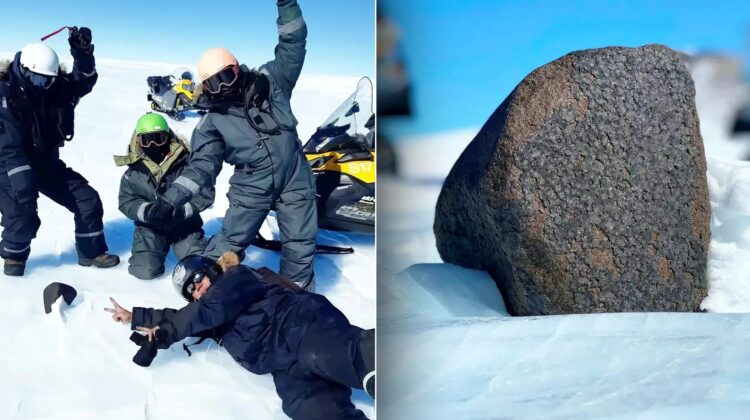
In Antarctica, a massive meteorite containing the oldest material in the solar system was discovered.
The 7.6kg space rock discovered in December 2022 was one of the largest meteorites ever discovered on the continent.
When the dark rock was discovered perched in the snowy white ground, it stood out effortlessly.

A large meteorite of this size is extremely rare. Over the last century, over 45,000 meteorites have been discovered in Antarctica.
The majority of these finds have been micrometeorites, which weigh only a few hundred grams at most.
According to experts, it sheds new light on the evolution of the sun and planets.
Although meteorites do not strike Antarctica as frequently as other places on Earth, the continent’s weather makes it an ideal location for searching for them.

The wilderness is the best place to look for surviving space rocks because the cold and dry weather conditions are ideal for their preservation.
According to the New Scientist, active glaciers also churn up ancient meteorites buried beneath the ice.
“Size doesn’t have to matter when it comes to meteorites,” Dr Maria Valdes of The Field Museum in Chicago said. She was a member of the team that discovered the massive meteorite.
The expedition members rode snowmobiles to the promising landing site, which had previously been mapped using satellite imagery.
They quickly found five new specimens near the Princess Elisabeth Antarctica research station.

A computer neural network assisted in revealing several locations that were relatively free of snow, which would have otherwise obscured the snow rocks.
The meteorites were found in one of these locations.
“From a scientific standpoint, even tiny micrometeorites can be extremely valuable. “Of course, finding such a large meteorite as this is extremely rare,” Valdes explained.
Only about a hundred of the meteorites discovered in Antarctica have been the same size or larger, according to Dr. Valdes.
According to Professor Maria Schonbachler of the Swiss Federal Institute of Technology, Zurich, the massive 17lb meteorite appears to be an ordinary chondrite, which is the most common type.

These space rocks contain the solar system’s oldest material and most likely originated in the asteroid belt between Mars and Jupiter.
“To be honest, finding such a large one is a stroke of luck,” Dr Schonbachler said.
It is being kept in a cool box before being sent to a lab in Belgium for further analysis to avoid thawing, which could damage its delicate chemical structure.
Dr. Ashley King of London’s Natural History Museum stated: “We don’t come across many meteorites as large as this in Antarctica.
“The more meteorites we have, the more samples we have for studying and learning about the early solar system.”
Cover Image: Maria Valdes / SWNS

Leave a Reply